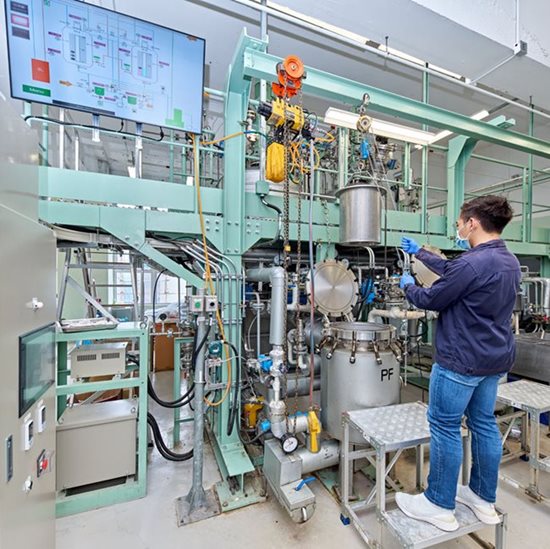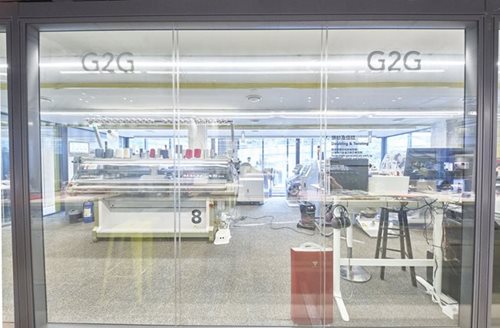Three keys to unlocking sustainability performance and future proofing your business

16 22
September 2027
Messegelaende HannoverGermany

HKRITA’s Green Machine for recycling polyester and cellulose-blended fabrics is currently being upscaled to new industrial units in Indonesia and Turkey.
The textile and garment industries have a business model problem and the bad news is that there is no silver bullet.
The good news, however, is that we seem to have all the right answers and know that we need to start manufacturing differently and consuming differently. It’s not rocket science, so there is reason to be optimistic.
This is a great time to be a textile engineer, with the need for new technologies and processes arising constantly, and a great time to be a materials scientist too. We need viable solutions in both fields.
We are meanwhile doomed to just continue trying to undo problems as quickly as possible if we don’t think about things at the design stage. Circularity has to be designed into products, considering the blends that are employed and the way materials are constructed.
In one way, we are selling an obsolete set of requirements to our young designers by selling the fashion industry as an art, whereas it is really fast becoming a science.
Today we’re not only looking for more Coco Chanels – we’re looking for young industrial engineers and material scientists and people who understand big data and how to sell things online. The garment business is much more quantitative than we imagine it is, so the curriculum for courses in design schools, colleges and universities has to be updated, or there will be a lot of disappointed young people – because we’re misleading to them about what’s needed.
The garment supply chain’s problems are not insurmountable and what’s needed are young people with the passion and the urgency and the will to make the necessary changes happen.
It is the high volume, commoditised apparel business models which have to change.
Many brands and corporations have set long-term sustainability goals aiming to be carbon neutral by 2050, for example, but these are decided on by older men who know it will be the next generation’s problem because they’ll be retired. We need radical aspirational goals from the younger generation now, and to quickly move these goals from being aspirational to tactical. If we set much shorter goals and only achieve 50% success, that’s still better than goals for 2050 requiring no immediate action.
Already, the luxury brands cannot discount their way out of trouble and these restrictions are soon going to cascade down to fast fashion.
These major companies are not going to go away, but will have to move from selling commodities to providing services and many questions arise from this major change. Will they take leasing or rental models, and will they operate in economies in which apparel is priced differently? Will apparel soon be taxed differently because disposal or reprocessing costs have to be factored in to the real cost of a garment? And should there be a carbon tax on top of that?
Here in Hong Kong, HKRITA has worked with The Mills, a £69 million arts and cultural complex which opened in December 2018 to try and illustrate one way service-based businesses might operate, by focusing on an experience, rather than a product.
The Mills has been repurposed from the shells of three huge textile mills which were built in the 1950s by Nan Fung, a company which grew in tandem with the booming textile industry, but as Hong Kong’s economic base shifted from manufacturing to services and as costs rose, moved into property development.
The mills were abandoned in 2008, but in 2014, Vanessa Cheung – granddaughter of the company’s founder – came up with the idea for The Mills, pushing Nan Fung to preserve its birthplace and give the buildings a new lease of life.

HKRITA established the Garment-to-Garment Recycle System at a retail shop in The Mills in Hong Kong, for consumers to experience first hand how closed loop manufacturing works.
HKRITA established the Garment-to-Garment Recycle System at a retail shop in The Mills, showcasing a complete miniature of the three industrial-scale recycling units which are operational at our Novetex Upcycling Plant across the city, with the addition of spinning, doubling and twisting units and two Shima Seiki Wholegarment knitting machines.
We have encouraged consumers to bring in their old garments and within a few days collect a new one that has been completely repurposed – with the addition of extra virgin yarn content – into something totally unique, as an illustration of how closed loop manufacturing works.
The shop is all about the experience, as well as spreading awareness and we believe, on a small scale, it has successfully demonstrated the concept making the move from supplying commodity products to providing services and experiences. The Garment-to-Garment shop is currently being expanded and a second, similar Nan Fung Textiles-backed experience centre has just opened in the heart of London.
Meanwhile, at HKRITA we have also successfully developed a hydrothermal system – The Green Machine – for recycling polyester and cellulose-blended fabrics, that is currently being upscaled to new industrial units in Indonesia and Turkey.
Seeing this project become truly commercially viable is wonderful.
One of the hard realities – and I would love someone to prove me wrong – is that our industry will have to move away from petroleum-based materials, which means that 60% of the materials we currently use today can’t be used in the near future. Even if every polyester yarn we use is 100% recycled, we still have to stop making virgin materials from petroleum. It’s taking stable forms of carbon and making them unstable. We now have to put a roadmap for achieving this change out there.

Edwin Keh, CEO of HKRITA
About Hong Kong Research Institute of Textiles and Apparel Limited (HKRITA)
Established in 2006, HKRITA is funded by the Innovation and Technology Commission of the HKSAR Government and hosted by The Hong Kong Polytechnic University. It has been facilitating the textile and fashion industry to move up high value-added manufacturing and servicing activities, and enhancing competitiveness of the industries in the global market through research and development, in addition to technology transfer.
Subscribe to our mailing list and stay up-to-date with news and developments in ITMA and the textile and garment industry.